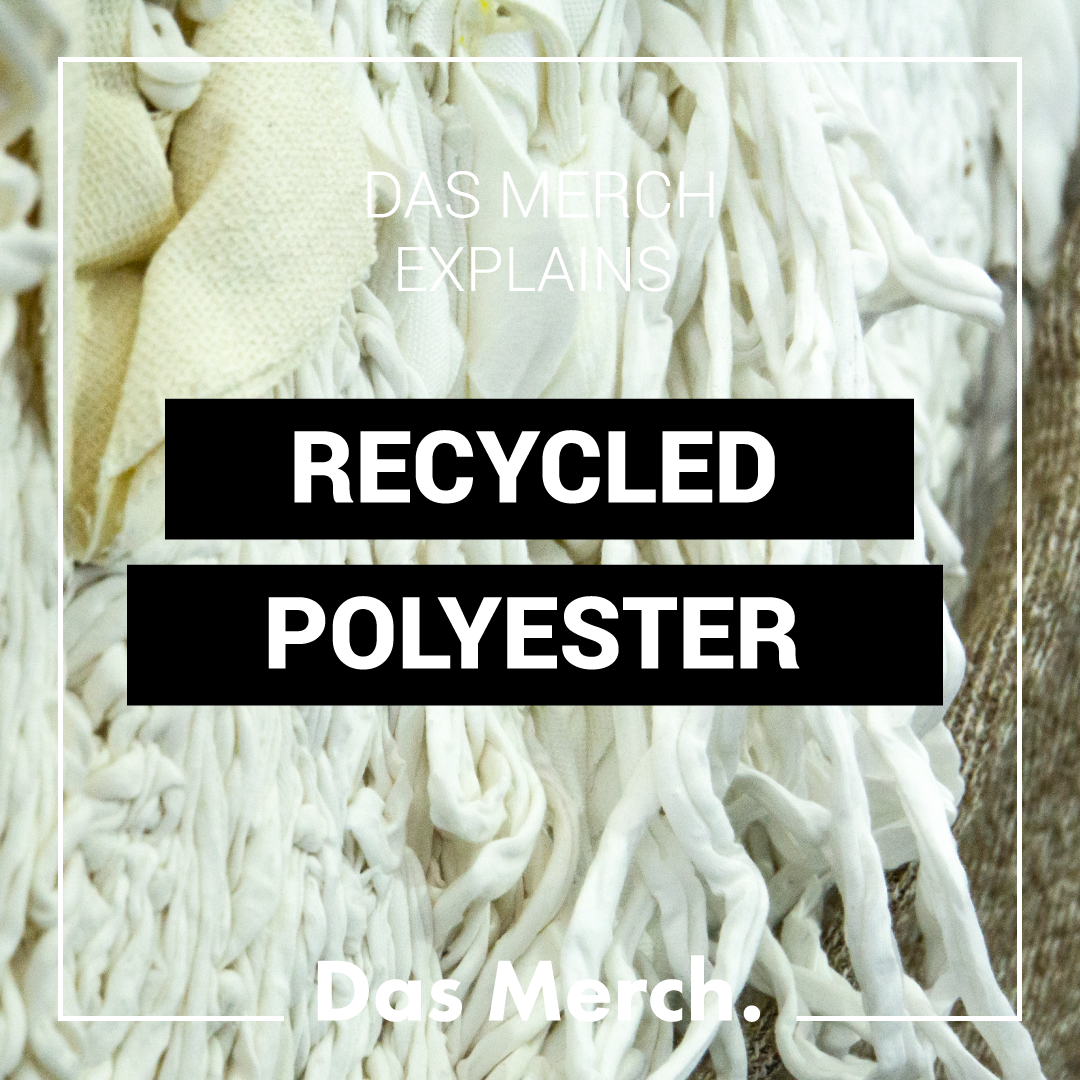Das Merch X Recycled Polyester
RECYCLED POLYESTER
Closer look at the pros & cons of recycled polyester
Polyester is a non-biodegradable, from fossil fuel human-made fabric. Currently polyester accounts for 16% of fabrics used in the textile industry. According to the Grand View Research, the main material for recycled polyester is PET bottles, simple plastic bottles that contain any drink you find in grocery shop (called rPET after recycling). rPET increased its market share from 8% to 14% from 2007 to 2017 respectively. So, there are enough incentives to start recycling polyester.
How is Recycled Polyester Fiber Made
There are two ways to create recycled polyester out of PET bottles:
mechanical and chemical.
Mechanical way is simpler and cheaper. Bottles are washed, shred into pieces, turned back into polyester chip and then chips undergo the traditional fiber manufacturing process. This process requires no toxic chemicals, however the process shortens the fiber and consequently decreases its strength. Therefore, afterwards it is blended with another fabric. Currently fabric blends are difficult or even impossible to further recycle. For example, it is possible to recycle polyester and cotton blends, but the process of doing it is at the pilot level and not used on a large scale yet.
The chemical option process goes as follows: PET plastic is returned to its original chemical form that isn’t distinguishable from virgin polyester and can be used to the standard polyester fiber production process. The chemical way is more expensive, requires a high level of expertise and has its own flaws. However, it keeps the quality of the fabric the same as the virgin polyester. In conclusion, recycled polyester doesn’t solve the PET waste issue, it only mitigates it by extending its lifecycle.
Recycled Polyester CONS
1. After mechanical recycling process chips differ in color, which leads to high levels of re-dying in order to reach color consistency. Polyester re-dying process might involve chlorine-based bleaches to whiten the base. It also requires large amount of water, energy and chemicals.
2. Studies show that fully stacked laundry machine with polyester clothes discharges up to 700k microplastic fibers that cannot be filtered and end up in the oceans. It is estimated that about half a million tonnes of microplastic from washing machines end up in the oceans annually. Both virgin and recycled fabric release microplastics that can end up in our food chain.
Recycled Polyester PROS
1. Recycled polyester provides a second life for artificial material that is not biodegradable. Otherwise plastic ends up in landfills or is burned to reattract invested energy.
Estimates show that approximately 5 to 13 million metric tons of plastic end up in the oceans annually. Using old PET bottles to produce polyester fabric extends their lifecycle.
2. Production of recycled polyester requires around 60% less energy and emits up to 32% less CO2 in comparison to production of virgin polyester.
3. The main raw material for polyester is oil. As Patagonia the sustainable fashion brand and pioneer in recycled polyester usage advocates by choosing recycled option, we can reduce the extraction of crude oil. That would lessen our dependence on the oil industry that is the number one polluter in the world.
Why Recycled Polyester?
The belief that plastic can be infinitely recycled is not entirely correct. Everytime the plastic is melted, the subsequent iteration of polymer is degraded. Therefore, each time of recycling lowers the quality of products. If people believe that plastic can be recycled infinitely they don’t feel the need to consume less plastic products. That is the major problem.
However, we already invested raw material and energy to produce virgin plastic products. Therefore, now we should try to reuse what we already have and choose recycled products instead.
